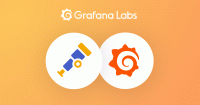Caution
Grafana Agent has reached End-of-Life (EOL) on November 1, 2025. Agent is no longer receiving vendor support and will no longer receive security or bug fixes. Current users of Agent Static mode, Agent Flow mode, and Agent Operator should proceed with migrating to Grafana Alloy. If you have already migrated to Alloy, no further action is required. Read more about why we recommend migrating to Grafana Alloy.
Important: This documentation is about an older version. It's relevant only to the release noted, many of the features and functions have been updated or replaced. Please view the current version.
Configure Grafana Agent clustering in an existing installation
You can configure Grafana Agent to run with clustering so that individual agents can work together for workload distribution and high availability.
Note: Clustering is a beta feature. Beta features are subject to breaking changes and may be replaced with equivalent functionality that covers the same use case.
This topic describes how to add clustering to an existing installation.
Configure Grafana Agent clustering with Helm Chart
This section guides you through enabling clustering when Grafana Agent is installed on Kubernetes using the Grafana Agent Helm chart.
Before you begin
- Ensure that your
values.yamlfile hascontroller.typeset tostatefulset.
Steps
To configure clustering:
Amend your existing values.yaml file to add
clustering.enabled=trueinside of theagentblock:agent: clustering: enabled: trueUpgrade your installation to use the new
values.yamlfile:helm upgrade RELEASE_NAME -f values.yamlReplace
RELEASE_NAMEwith the name of the installation you chose when you installed the Helm chart.Use the Grafana Agent UI to verify the cluster status:
Click Clustering in the navigation bar.
Ensure that all expected nodes appear in the resulting table.



